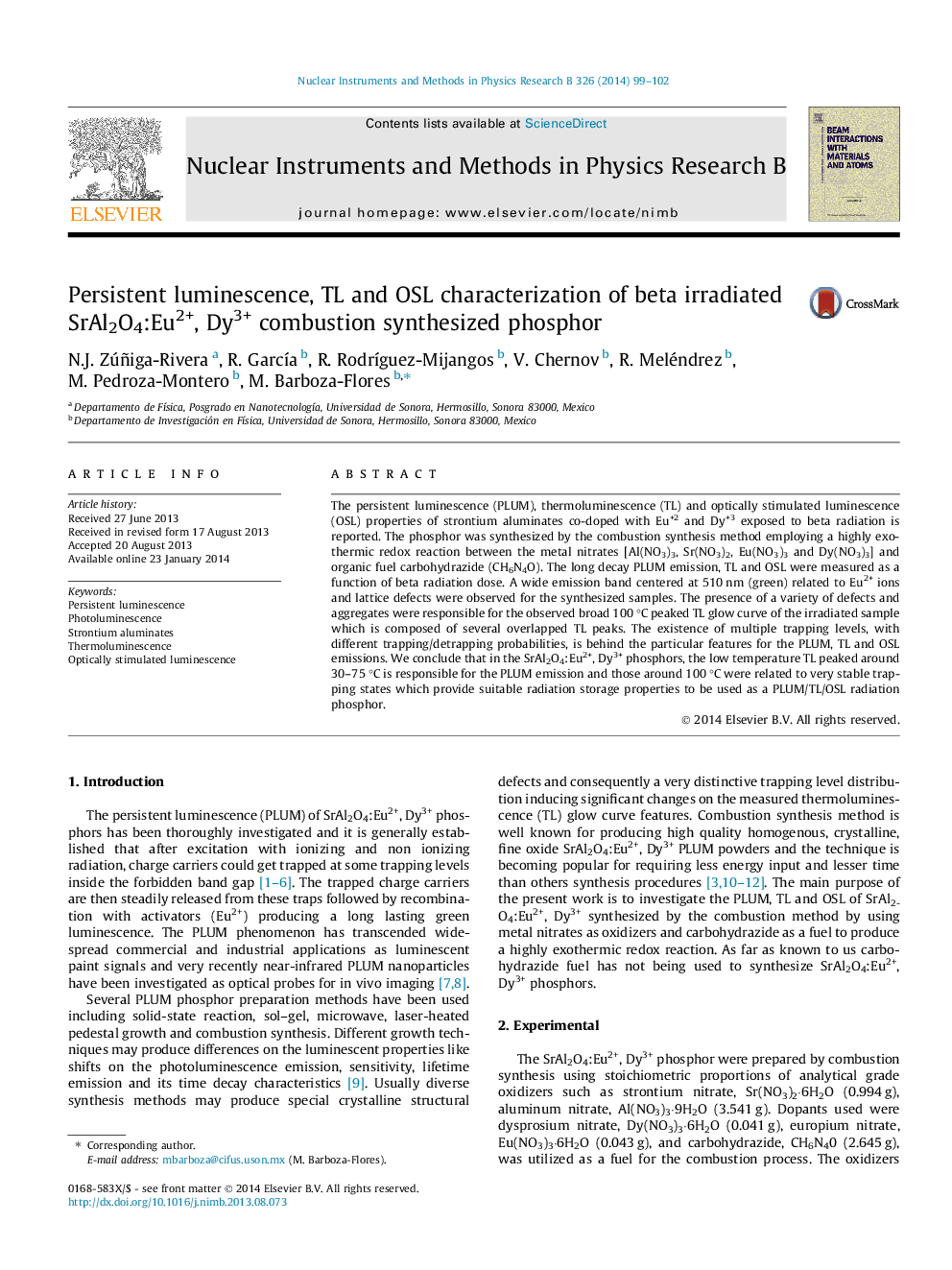| کد مقاله | کد نشریه | سال انتشار | مقاله انگلیسی | نسخه تمام متن |
|---|---|---|---|---|
| 1681027 | 1518693 | 2014 | 4 صفحه PDF | دانلود رایگان |

The persistent luminescence (PLUM), thermoluminescence (TL) and optically stimulated luminescence (OSL) properties of strontium aluminates co-doped with Eu+2 and Dy+3 exposed to beta radiation is reported. The phosphor was synthesized by the combustion synthesis method employing a highly exothermic redox reaction between the metal nitrates [Al(NO3)3, Sr(NO3)2, Eu(NO3)3 and Dy(NO3)3] and organic fuel carbohydrazide (CH6N4O). The long decay PLUM emission, TL and OSL were measured as a function of beta radiation dose. A wide emission band centered at 510 nm (green) related to Eu2+ ions and lattice defects were observed for the synthesized samples. The presence of a variety of defects and aggregates were responsible for the observed broad 100 °C peaked TL glow curve of the irradiated sample which is composed of several overlapped TL peaks. The existence of multiple trapping levels, with different trapping/detrapping probabilities, is behind the particular features for the PLUM, TL and OSL emissions. We conclude that in the SrAl2O4:Eu2+, Dy3+ phosphors, the low temperature TL peaked around 30–75 °C is responsible for the PLUM emission and those around 100 °C were related to very stable trapping states which provide suitable radiation storage properties to be used as a PLUM/TL/OSL radiation phosphor.
Journal: Nuclear Instruments and Methods in Physics Research Section B: Beam Interactions with Materials and Atoms - Volume 326, 1 May 2014, Pages 99–102